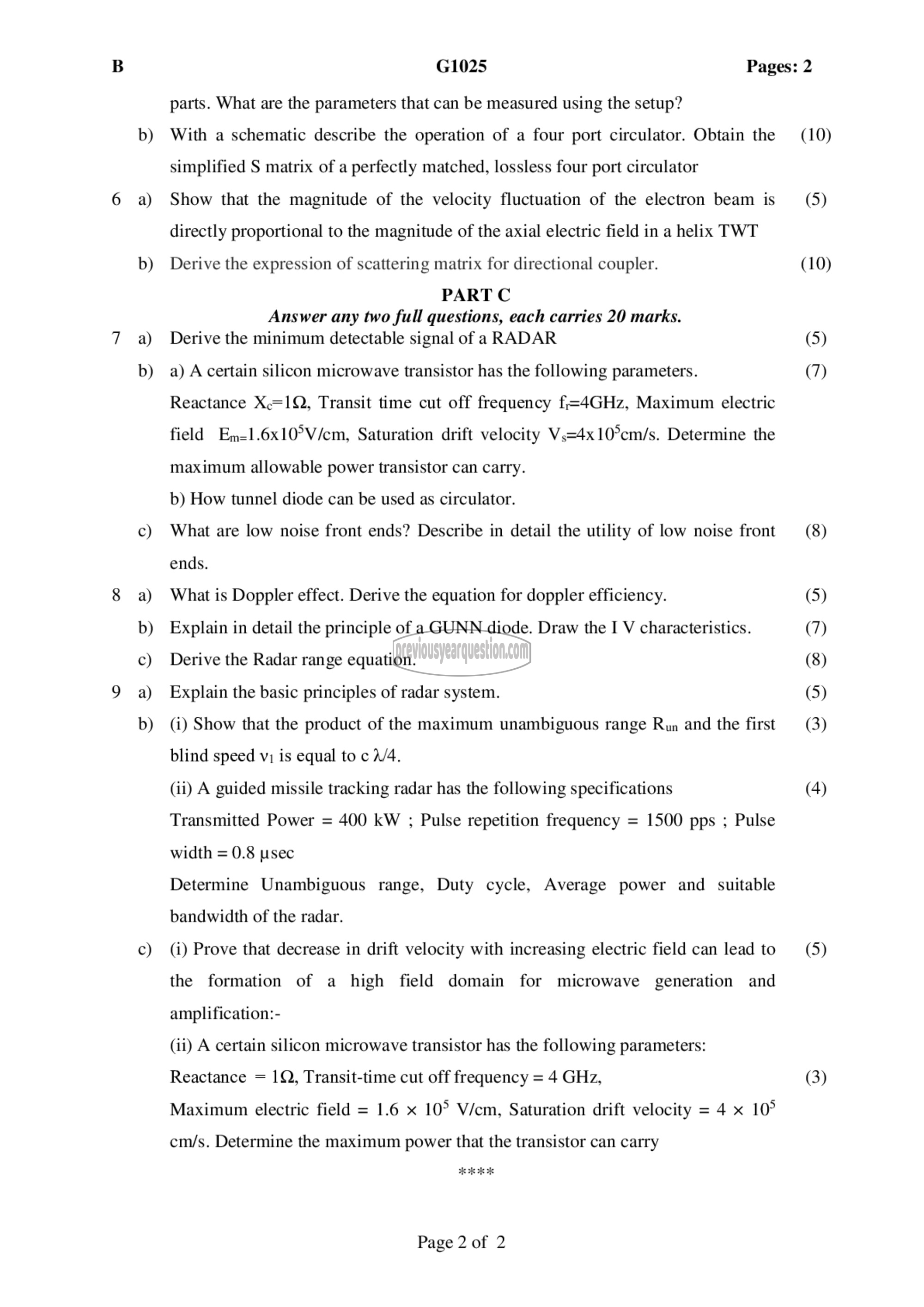APJ ABDUL KALAM TECHNOLOGICAL UNIVERSITY Previous Years Question Paper & Answer
Semester : SEMESTER 7
Subject : Microwave & Radar Engg
Year : 2019
Term : MAY
Scheme : 2015 Full Time
Course Code : EC 403
Page:2
b)
a)
b)
a)
b)
0)
a)
b)
0)
a)
b)
0)
(७1025 Pages: 2
parts. What are the parameters that can be measured using the setup?
With a schematic describe the operation of a four port circulator. Obtain the
simplified S matrix of a perfectly matched, lossless four port circulator
Show that the magnitude of the velocity fluctuation of the electron beam is
directly proportional to the magnitude of the axial electric field in a helix TWT
Derive the expression of scattering matrix for directional coupler.
PART C
Answer any two full questions, each carries 20 marks.
Derive the minimum detectable signal of a RADAR
a) A certain silicon microwave transistor has the following parameters.
Reactance X.=1Q, Transit time cut off frequency f=4GHz, Maximum electric
field Em=1.6x10°V/cm, Saturation drift velocity Vs=4x10°cm/s. Determine the
maximum allowable power transistor can carry.
b) How tunnel diode can be used as circulator.
What are low noise front ends? Describe in detail the utility of low noise front
ends.
What is Doppler effect. Derive the equation for doppler efficiency.
Explain in detail the principle of a GUNN diode. Draw the I V characteristics.
Derive the Radar range equation.
Explain the basic principles of radar system.
(i) Show that the product of the maximum unambiguous range Run and the first
blind speed v; is equal to ० 1/4.
(ii) A guided missile tracking radar has the following specifications
Transmitted Power = 400 kW ; Pulse repetition frequency = 1500 pps ; Pulse
width = 0.8 usec
Determine Unambiguous range, Duty cycle, Average power and suitable
bandwidth of the radar.
(i) Prove that decrease in drift velocity with increasing electric field can lead to
the formation of a high field domain for microwave generation and
amplification:-
(ii) A certain silicon microwave transistor has the following parameters:
Reactance = 1Q, Transit-time cut off frequency = 4 GHz,
Maximum electric field = 1.6 x 10° V/cm, Saturation drift velocity = 4 x 10°
cm/s. Determine the maximum power that the transistor can carry
Page 2 of 2
(10)
(5)
(10)
(5)
(7)
(8)
(5)
(7)
(8)
(5)
(3)
(4)
(5)
(3)
